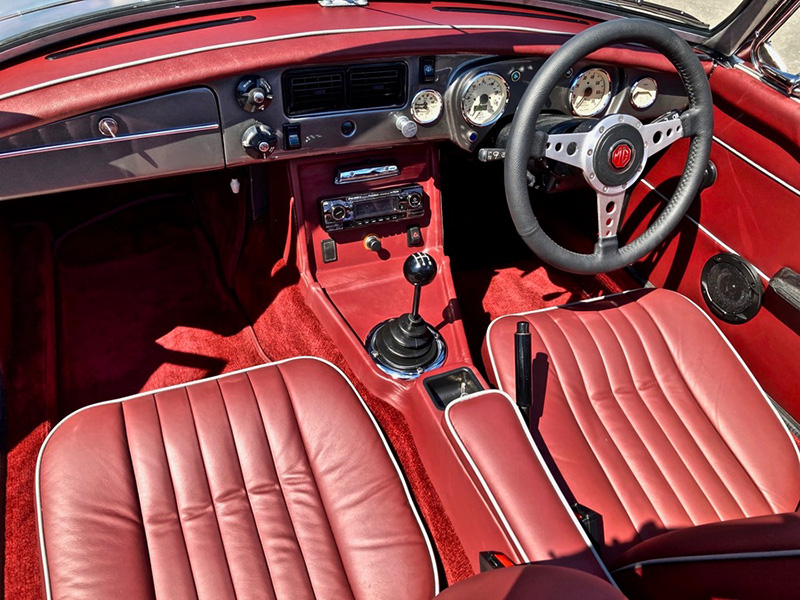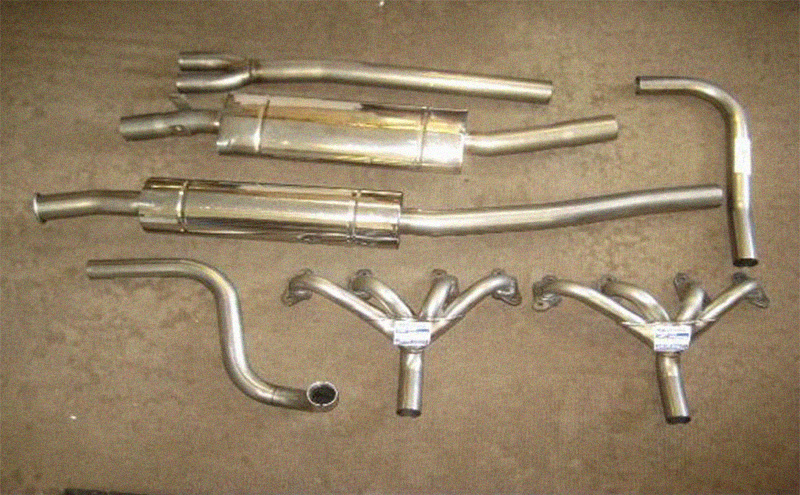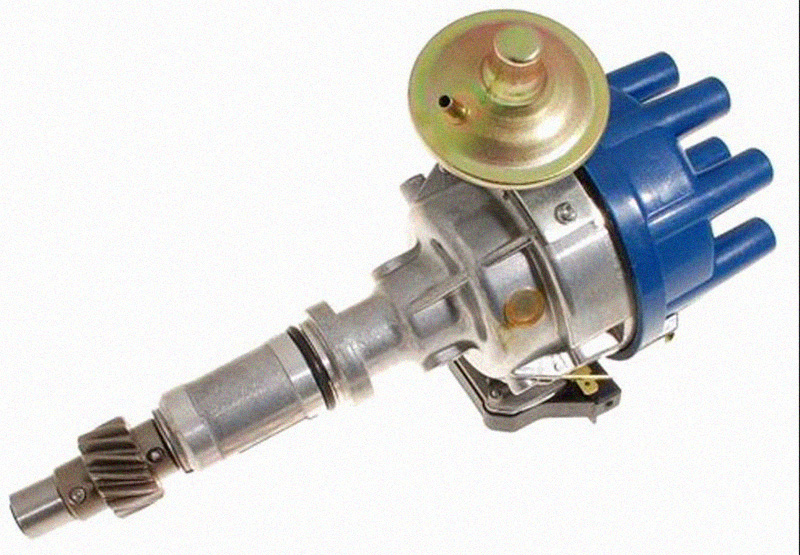MGB Restoration Specialists
High-quality MGB Classic cars hand-crafted by talented engineers
![]()
BESPOKE MGB Restoration and Modernisation Specialists
We don’t just build MGBs, we re-imagine them. Pioneering Bespoke MGBs for over 3 decades, we’ve transformed how people experience these iconic classic cars…
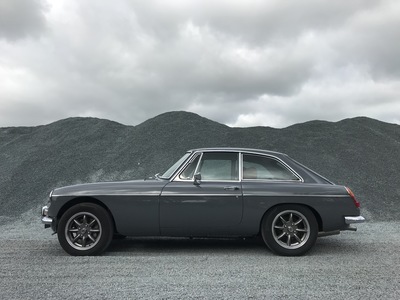
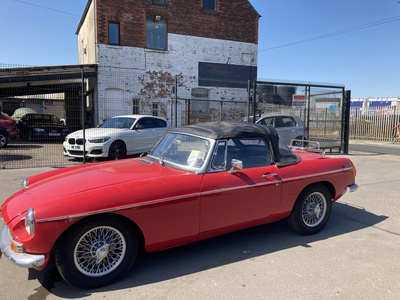
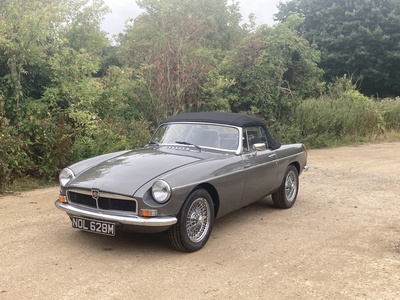
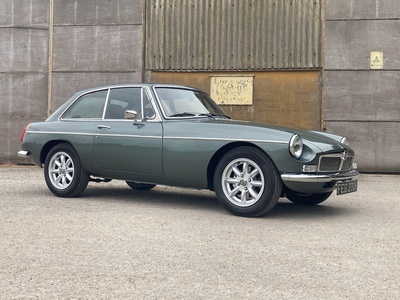
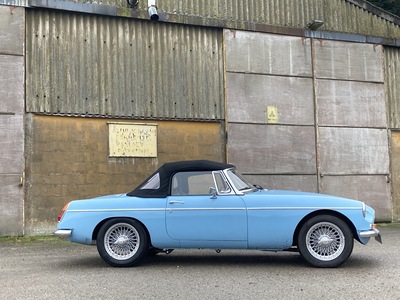
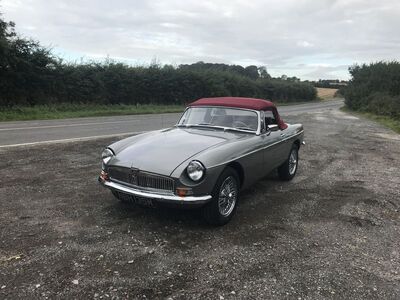
MGB GT Restomod
Unleash the Legend: Bespoke MGB GT V8 Reborn
The MGB GT V8: a symphony of power and style, why settle for less than ours? Let us ignite your journey to a bespoke rebuild, crafting an MGB GT V8 that roars with your individuality.
From Resto to Bespoke
- Restored: A recreation of the original GT V8.
- Bespoke: Your vision unleashed, from the thrumming heart of the engine to the handcrafted interior, every detail reflects your desires.
We are pleased to show you in MGB GT Restomod the technical specifications of its restoration and a complete gallery of restorations carried out for more than 30 years.
Specification System
Please read our MGB Specification System for further information.
SPECIFICATION SYSTEM MAIN CONTENT (direct links)
MGB Roadster Restomod
Let us Craft Your Dream MGB Roadster: A Bespoke Rebuild Guide
We will steer you towards a bespoke rebuild experience, transforming an MGB Roadster classic car into a unique reflection of your desires.
Beyond Restoration: The Bespoke Advantage
Our bespoke rebuild transcends mere restoration. It’s about meticulously recreating your vision, from the V8 engine’s roar to the leather’s embrace. Unlike a “restored” car, a bespoke MGB becomes an extension of you, boasting performance and aesthetics tailored to your specific preferences.
We are pleased to show you in MGB Roadster Restomod the technical specifications of its restoration and a complete gallery of restorations carried out for more than 30 years and beyond.
Please read our MGB Specification System for further information.
MGB GT V8, a symbol of British automotive excellence
A brief Mechanical History
This isn’t just any classic car; it’s a symbol of British automotive excellence
But before you get swept away by its allure, it’s crucial to understand its legacy, mechanics, and what truly makes it tick.
Whether you’re a seasoned collector or a newbie with a passion, here’s a comprehensive guide on what you need to know before making the MGB V8 your next prized possession.
Let’s shift gears and delve deep!
A Short History
The MGB, manufactured by the British Motor Corporation (BMC) and later by its successors, first graced the roads in 1962. It was an evolution, a modern successor to the MGA, and quickly became a symbol of the 1960s British sports car boom. Sleek, affordable, and with a performance that appealed to the masses, the MGB was an instant hit.
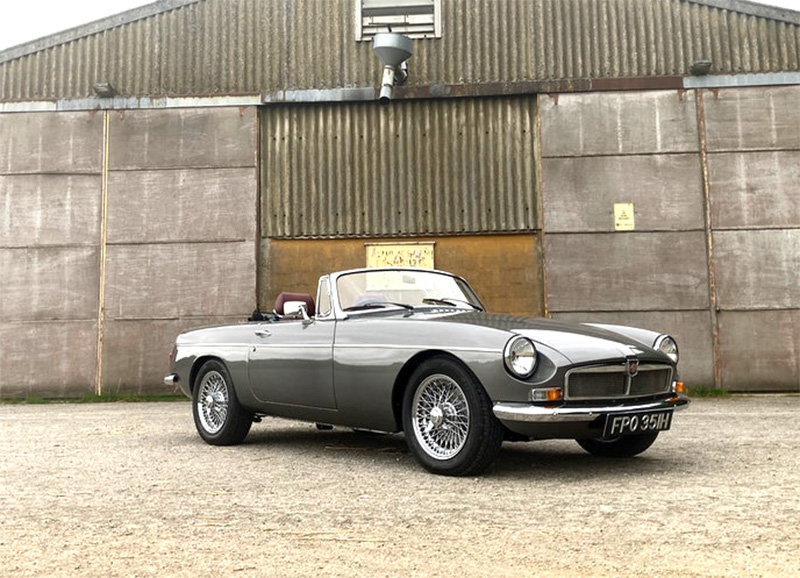
The MGB GT V8 engine
The V8 engine is much lighter than the four-cylinder variant. It weighs 40 lbs less.
The block was made from aluminium; the cylinder heads were die-cast aluminium with iron valve guides and valve seats. The actual design of the engine was fairly standard, with a five-main bearing crankshaft and a centrally mounted camshaft driven by a chain.
The factory V8 cars had an 88.9mm bore with a 71.1mm stroke giving an engine capacity of 3528cc.
Modifications were made to enable the engine to fit into the MGB engine bay to avoid any bonnet bulges or alterations. The inlet manifold was constructed so the carburettors could be installed at the rear of the engine, very close to the heater box; this gave just enough clearance for the bonnet to close.
Not much changed in the engine compartment throughout the MGB GT V8 production. Many parts were used from the standard MGB, such as the pedal box and heater system.
The V8 engine had to use a remote oil filter that was situated on the radiator support panel on the left-hand side with the pipes running to the oil cooler mounted on the front panel.
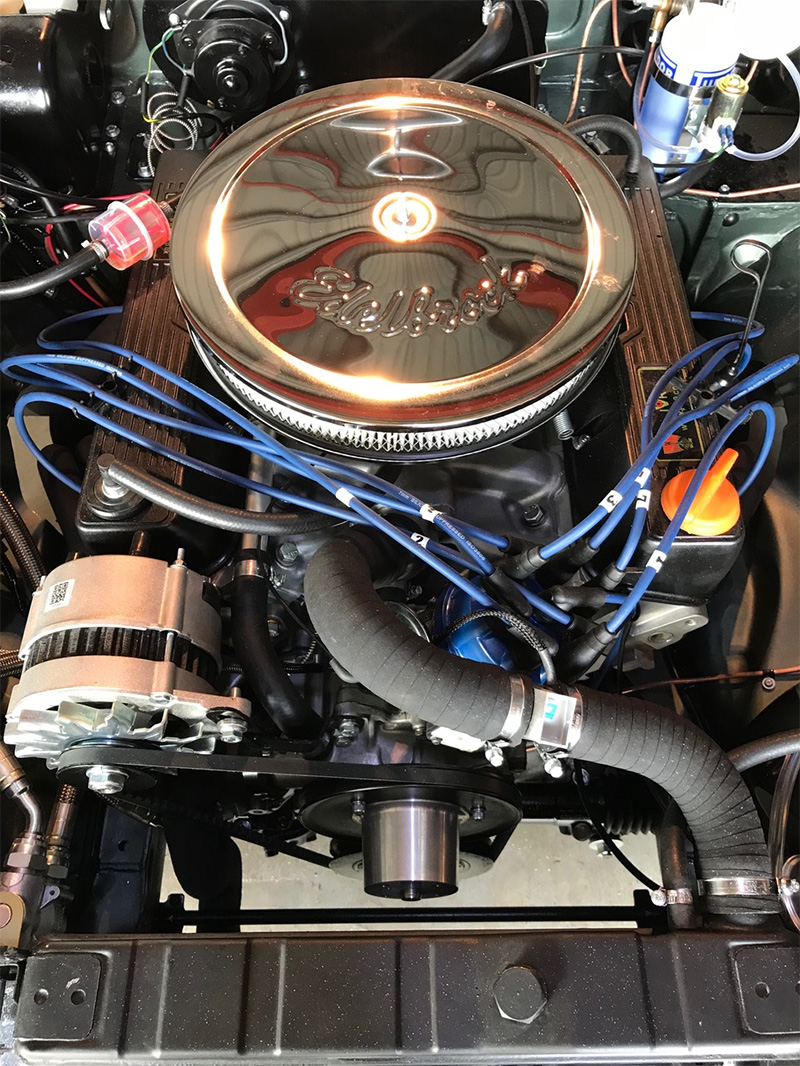
MGB GT V8 brakes
It’s always an excellent decision to improve the brakes on any car that is tuned to go faster than the original design, and the brakes were improved on the GT V8. The front brake system was fitted with larger brake callipers along with uprated brake discs, which helped bring the car to a safe stop.
Front disc assembly
A remote brake servo unit soon became standard on the V8 model to give some assistance. This setup was soon included on all MGBs, whether they were 1800cc or 3500cc versions.
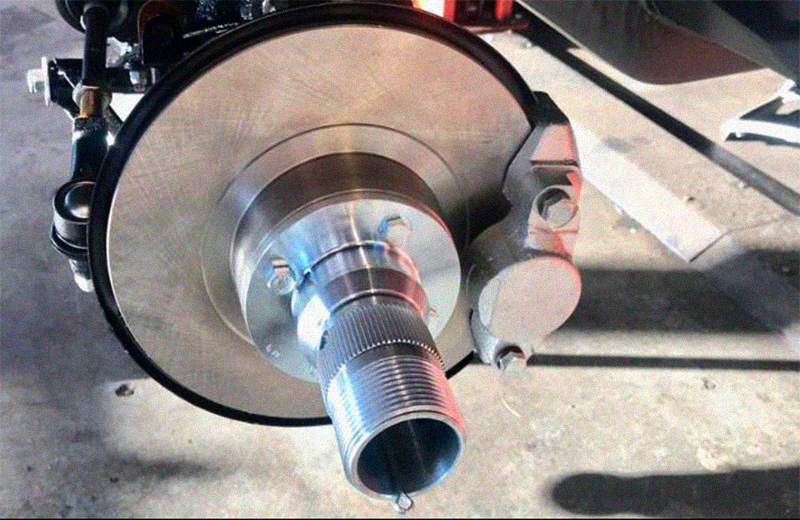
MGB Fuel system
The V8 engine used a pair of HIF6 SU carburetors fitted to the rear of the engine compartment, a very similar design to the 1.8 MGB carburetors but with a choke diameter of 1 1/3 in. An air box was designed to fit across both the carburetors; this was very shallow, as it had to fit in front of the heater box, the air filters themselves protruding forward over the rocker covers.
All Bespoke MGB models have improved the air filters. The original equipment SU electric fuel pump was a standard item found on all MGB’s, MGB V8 and MGC cars. It was effective enough to cope with all engine sizes; unfortunately they were not 100% reliable.
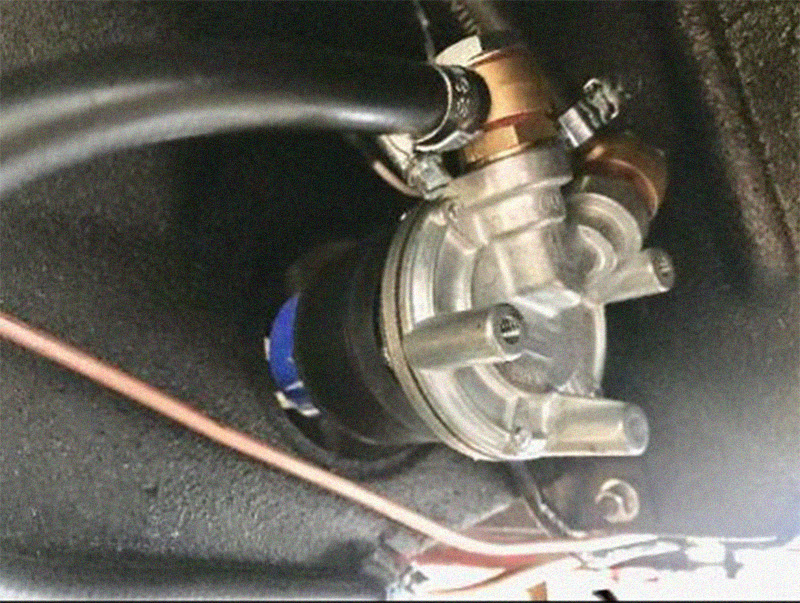
Servo unit on V8
To help keep the fuel consumption to a reasonable level, the V8 was fitted with the MGC’s 3.07:1 differential.
This aided long-distance cruising, all V8 cars equipped with the overdrive gearbox made covering longer distances more pleasurable. No changes were made to the rear axle, although the prop shaft material was stronger for the V8 cars.
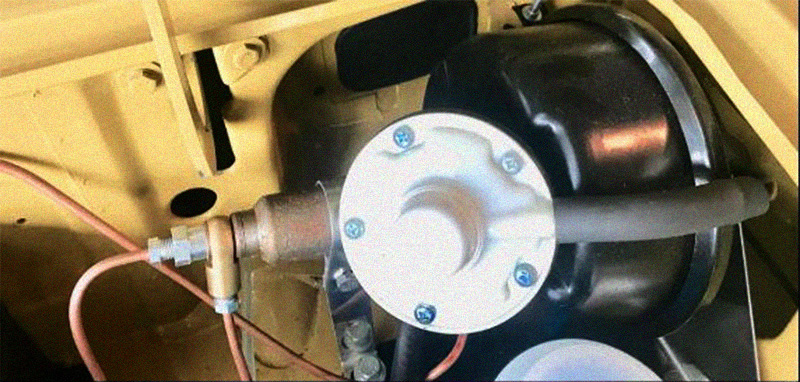
Cooling System Like Modern Cars
Improvements were made to cool the bigger engine; the radiator was moved towards the front of the car. This gave more space in the engine bay, allowing the engine to fit, a pair of twin cooling fans were slotted between the radiator and the front panel.
The fans were thermostatically controlled and set to kick in at 90°C. The design of the front grille also helped by allowing airflow to pass through more easily, again helping to keep the temperature down to a manageable level.
The cooling system was semi-sealed and came with a separate expansion tank fitted on the left inner wing. This same system was rolled out on all MGB’s from 1977 as the engine bay alterations remained for the V8, allowing the 3500cc engine to slot in.
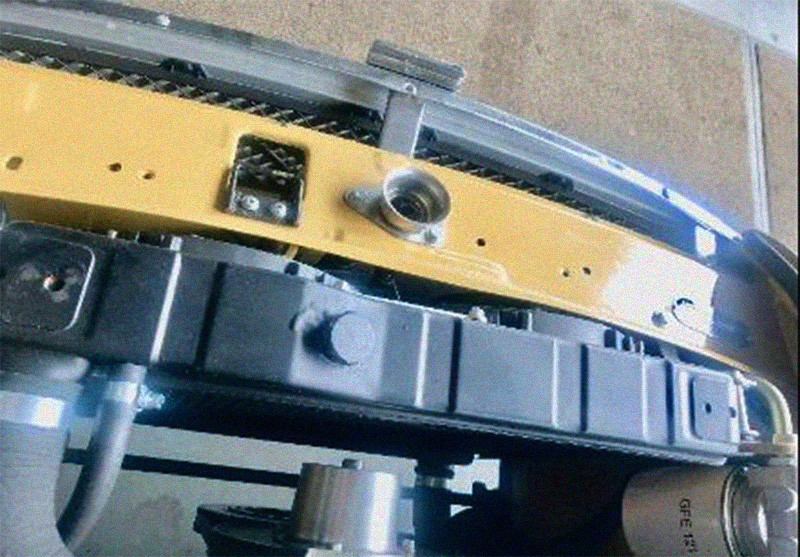
MGB GT V8 Gearbox
The gearbox on the V8 car was modified, the casing was altered to allow a larger 9 1/2-inch clutch, and the clutch master cylinder was strengthened compared to the four-cylinder model. A different speedometer drive was used, but no other significant changes were noted throughout the production, Bespoke MGB offers a much-improved gearbox if you want to buy an MGB V8 that really works well and runs much smoother with improved ratios too.
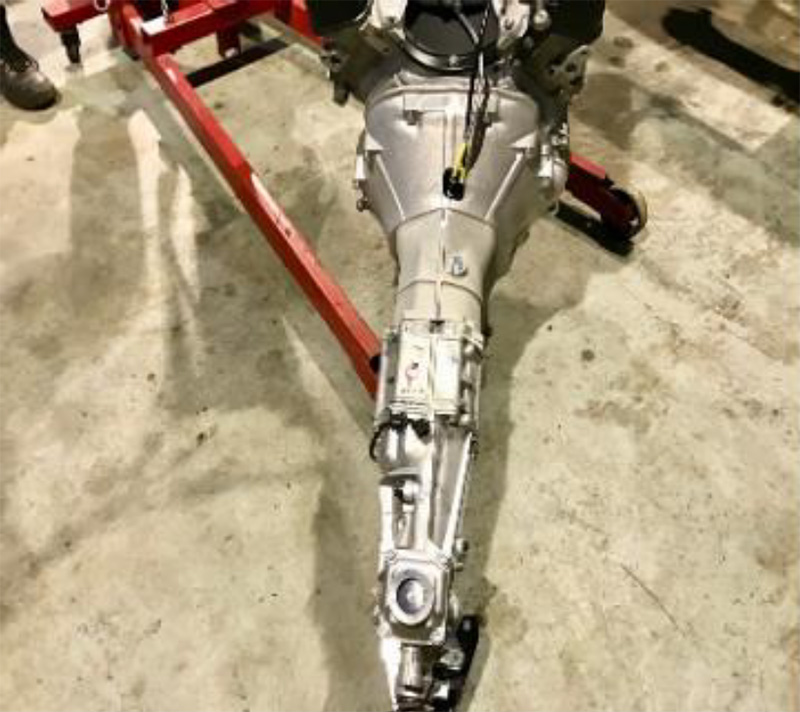
MGB GT V8 wheels
The wheels on the GT V8 were unique to this model and were previously supplied by Dunlop; the Centre section was cast alloy, and the outer rim was made of chrome-plated steel. They were the same four-stud pattern as the rest of the MGB range, but the wheel nuts were larger in size and unique to this wheel style. The rim size was 5Jx14, and all had a Centre cap with the MG logo to finish them off.
This particular wheel style was also used on the Jubilee model in 1975 but painted black and gold with a gold MG badge. 175HR-14 radial ply tires were used for the V8 cars. This was the only style of a wheel offered on the MGB GT V8 cars; it was one of the more distinctive signs that the V8 was different from the standard car.
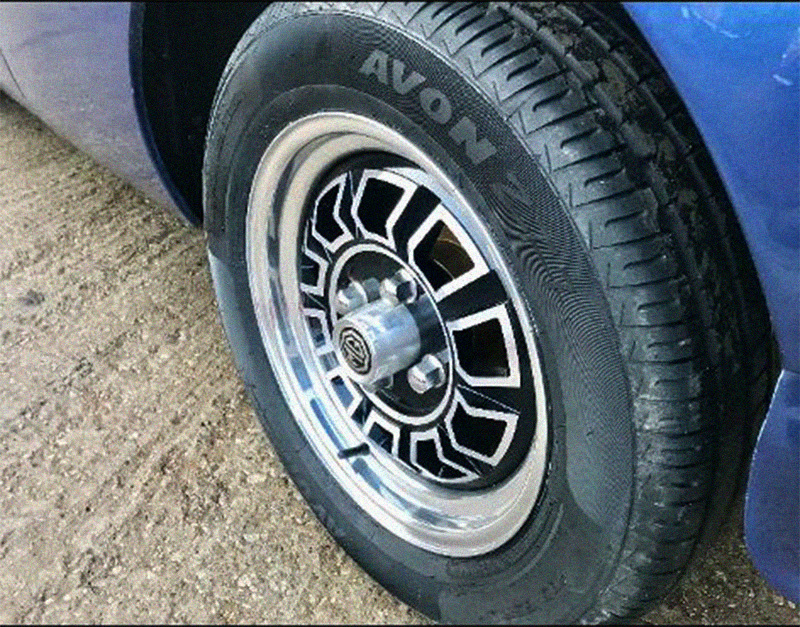
Factory MGB GT V8 specification details at a glance
| Production years | 1973 – 1976 |
| Body type | GT version only from factory |
| Engine | 3528cc V8 |
| Bore | 88.9mm |
| Stroke | 71.1mm |
| Compression ratio | 8.25:1 |
| Engine block | Aluminium block |
| Fuel | Twin SU cCarbs |
| Fuel tank | 12 gallons |
| Max power | 137bhp @5000rpm |
| Maximum torque | 193lb ft. @2900rpm |
| Power to weight ratio | 128.4 bhp/ton |
| Maximum speed | 125mph |
| 0-60mph | 8.5 seconds |
| Fuel consumption | 22mpg/td> |
| Gear box | 4 speed manual with overdrive |
| Brakes | Discs front and drums rear |
| Steering | Rack and pinion |
| Wheels – Composite | Alloy Centre’s / steel rims 5J x 14 |
| Tyres | 175HR 14 radial tyres |
MGB Colours
Colour |
Description |
Paint code |
Hexadecimal Color proof |
| Aconite | Purple, easily confused with Black Tulip | BVLC 95 | |
| Black | Black | BK 1 | |
| Black tulip | Dark purple, easily confused with Aconite | BVLC 25 | |
| Blaze | Orange | BVLC 16 | |
| Braken | Bright Orange, with a deep gloss | BVLC 93 | |
| BRG / Gold | Jubilee colours | – | |
| Bronze Yellow | Yellow Ochre | BVLC 15 | |
| Brooklands Green | Mid to dark Green, but it is not BRG | BVLC 169 | |
| Chartreuse | Pale primrose | BVLC 167 | |
| Citron | Vivid greenish yellow | BVLC 169 | |
| Damask Red | Burgundy | BVLC 99 | |
| Ermine White | White, used on 2902, the last but one V8 | – | |
| Flame Red | GD2D” 100G is finished in Red Flame | – | |
| Flamenco Red | Scarlet, with a hint of orange | BVLC 133 | |
| Glacier White | White, with a bluish tinge | BVLC 59 | |
| Green Mallard | Dark green | BVLC 22 | |
| Harvest Gold | Golden beige | BVLC 19 | |
| Limeflower | Beige with a slightly greensih hue | BVLC 20 | |
| Mirage | Pale grey | BVLC 11 | |
| Police white | Plain white | – | |
| Sandglow | Sandy beige | BVLC 63 | |
| Thaiti Blue | Bright mid blue | BVLC 65 | |
| Teal Blue | Mid blue | BVLC 18 | |
| Tundra | Olive green | BVLC 94 |

